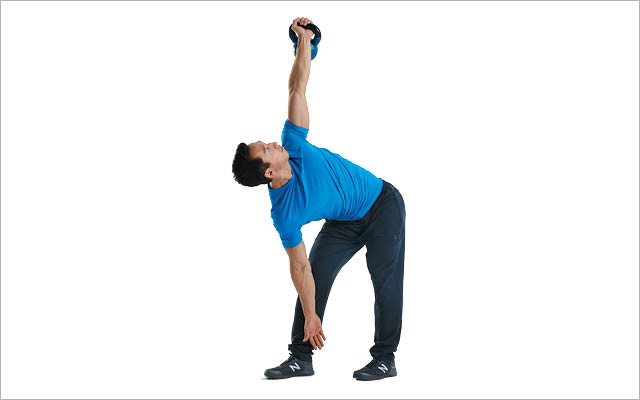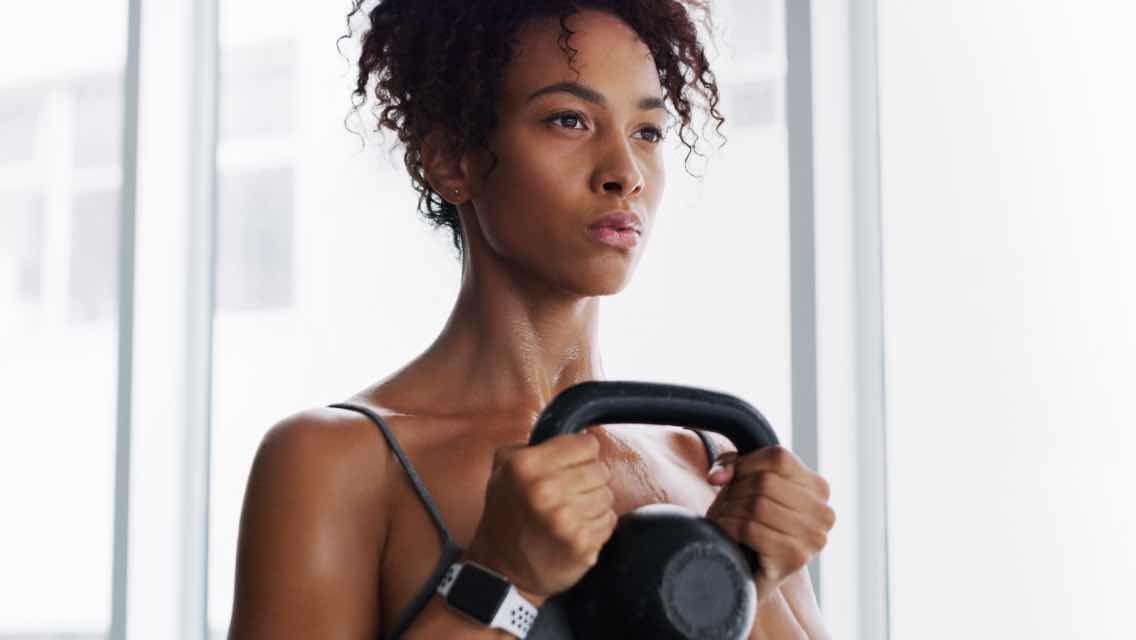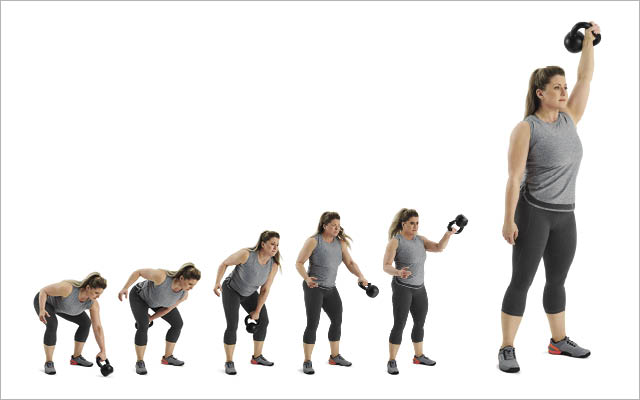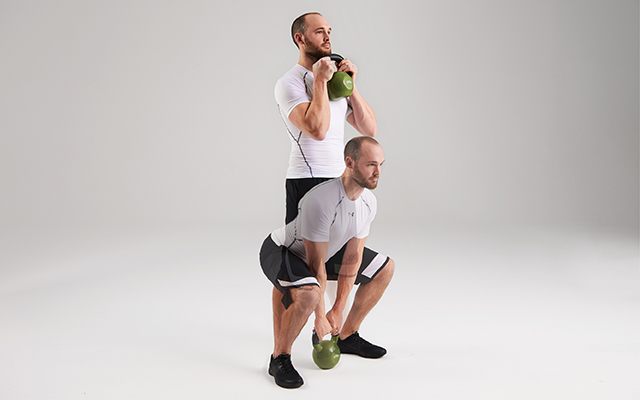The kettlebell windmill is a valuable mobility exercise that challenges midline rotation and full-body stability and flexibility — particularly through the shoulders, thoracic spine, hips, and hamstrings.
Each person’s windmill will be as individual as his or her anatomy and unique mobility, but there are a few common pitfalls that detract from the best form:
- Taking a too-wide stance: Place feet no wider than shoulder width, and keep your heels grounded.
- Bending at the waist or laterally flexing the spine: A windmill is not a side bend.
- Bending the elbow of your top arm: Keep that arm extended, elbow locked (but not hyperextended), while your hand is reaching for the ceiling.
- Searching for the stretch: It’s tempting to push into this movement until you feel a deep stretch (or until your bottom hand touches the floor), but don’t sacrifice good form.
- Shifting your weight forward: Your outside leg will be perfectly vertical and should support the majority — 70 to 80 percent — of your weight.
- Using too much weight: Start with no weight, then load lightly and progressively. Do not try to max out your overhead press with a windmill.
Incorporate windmills as part of your warm-up, cool-down, or off-day recovery session. Two sets of three to five reps, with a focus on form, will go a long way.
1. With feet under your hips, press a single kettlebell overhead. Turn both feet away from the side of your extended arm, angling them about 45 degrees.
Tip: Keep both feet planted firmly, without shifting or raising either heel.
2. Shift your weight back on the same 45-degree line to keep your outside hip stacked over your ankle. Keep a soft bend in the opposite knee.
Tip: Focus on extending the outside leg.
3. With your extended arm reaching toward the ceiling, rotate through your thoracic spine. Keep your eyes on the kettlebell.
4. Keep your bottom arm close to your front leg. Lower yourself only as far as your mobility allows, then reverse the motion to come to standing.
Tip: Maintain a soft bend in the front knee and allow your lower arm to trace the inside of your leg as you move through the exercise.
Variations
Body-Weight Kettlebell Windmill
Perform the movement as described without holding any additional weight. Focus on the hip shift-and-lift, the midline rotation, and extending your arms straight away from each other.
Half-Kneeling Kettlebell Windmill
This variation is a useful starting point for beginners as well as those who struggle to perform the standing version without turning the windmill into a side bend.
- Assume a low lunge position with your back knee on the floor and both knees bent to 90 degrees.
- Take the same-side arm as the front (raised) knee and extend it overhead.
- Look up at your top hand, hinge back through the hip of the front leg, rotate through the trunk, and lower your bottom hand to the floor about a foot in front of the back (kneeling) knee.
- Reverse the movement to return to your starting position.
- Once you get a feel for the movement, add a kettlebell.
- If stabilizing in this kneeling position is difficult, make it easier by swiveling the kneeling leg around about 90 degrees, so your back shin is perpendicular to your front heel.
Bottom-Loaded Kettlebell Windmill
Perform the movement as described while holding a kettlebell only in the bottom hand. This can be a useful progression between body-weight-only and a top-loaded windmill. It’s also useful a useful way to increase the challenge for the hips without overloading the shoulder of the arm extended overhead. Just because you are adding weight in the bottom arm, don’t forget the top arm: Focus on keeping the shoulder capsule stable as you reach straight toward the ceiling throughout the movement.
Double-Loaded Kettlebell Windmill
Perform the movement as described while holding kettlebells in both the top and bottom hands. This is the most challenging variation, so take your time, don’t add too-heavy weights, and limit the number of reps to what you can perform with utmost control.




This Post Has 0 Comments